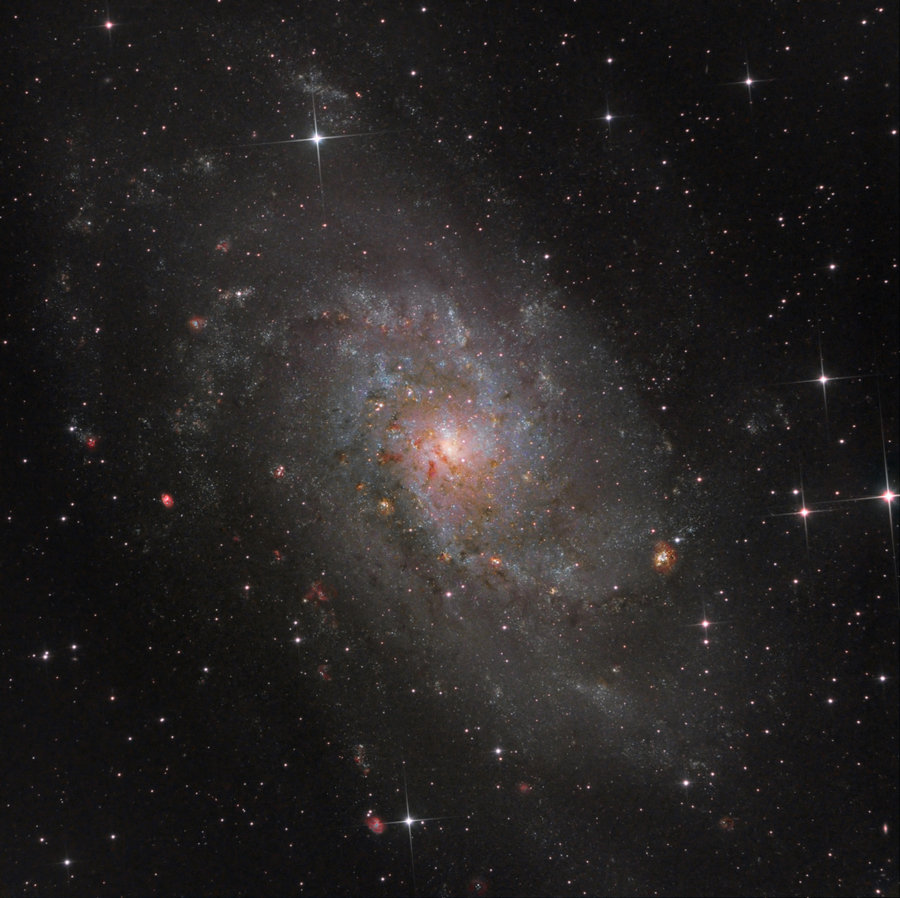by Alexandre Cucculelli » Sun Jan 26, 2020 12:54 pm
Messier 33
December 3, 2019 - January 5, 2020
http://www.astrosurf.com/cucculelli/galaxie35.html

Technical
UNC 254mm f / 4 Astrograph Telescope Instrument
Imager CCD camera QSI 540WSG at -25 °, Atik GP guidance
Exposure L 22x600 sec in bin 1x1 on 3: 12: 2019, RGB 8x300 sec in bin 1 x1 on 05: 01: 2020, Ha made but not integrated into the images. 30: 12: 2019
8 Dark / 8 Flat / 8 Offset
Prism 10 processing, Photoshop CS3
Remarks Flat problem
descriptive
The Triangle Galaxy (M33 or NGC 598) is one of the members of the Local Group, which also includes the Andromeda Galaxy (M31), and our Milky Way. It is also approaching us at a speed of 180 km / s. It is about 3 million light years away.
Its diameter is 60,000 light years, and it has 40 billion stars. Remarkably, M33 contains in its spiral arms many HII regions, centers of star formation.
Messier 33
December 3, 2019 - January 5, 2020
http://www.astrosurf.com/cucculelli/galaxie35.html
[img]https://zupimages.net/up/20/04/6vyp.jpg[/img]
Technical
UNC 254mm f / 4 Astrograph Telescope Instrument
Imager CCD camera QSI 540WSG at -25 °, Atik GP guidance
Exposure L 22x600 sec in bin 1x1 on 3: 12: 2019, RGB 8x300 sec in bin 1 x1 on 05: 01: 2020, Ha made but not integrated into the images. 30: 12: 2019
8 Dark / 8 Flat / 8 Offset
Prism 10 processing, Photoshop CS3
Remarks Flat problem
descriptive
The Triangle Galaxy (M33 or NGC 598) is one of the members of the Local Group, which also includes the Andromeda Galaxy (M31), and our Milky Way. It is also approaching us at a speed of 180 km / s. It is about 3 million light years away.
Its diameter is 60,000 light years, and it has 40 billion stars. Remarkably, M33 contains in its spiral arms many HII regions, centers of star formation.